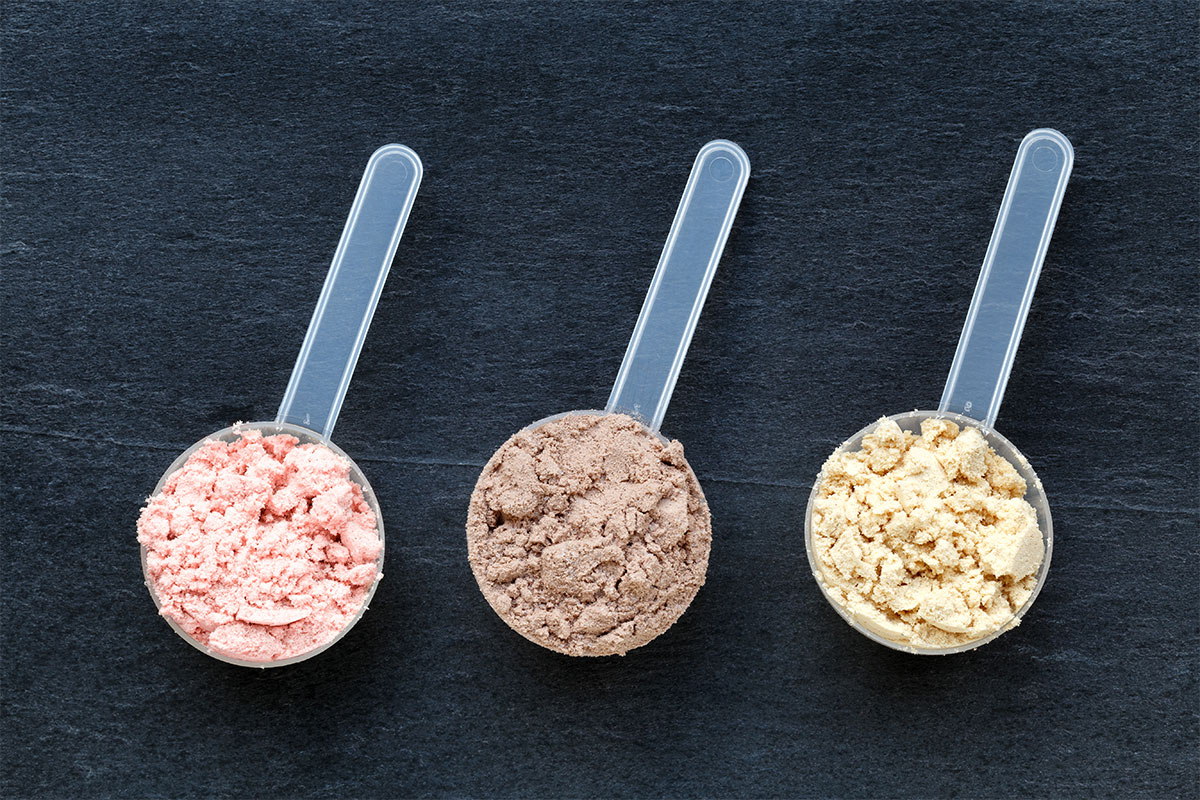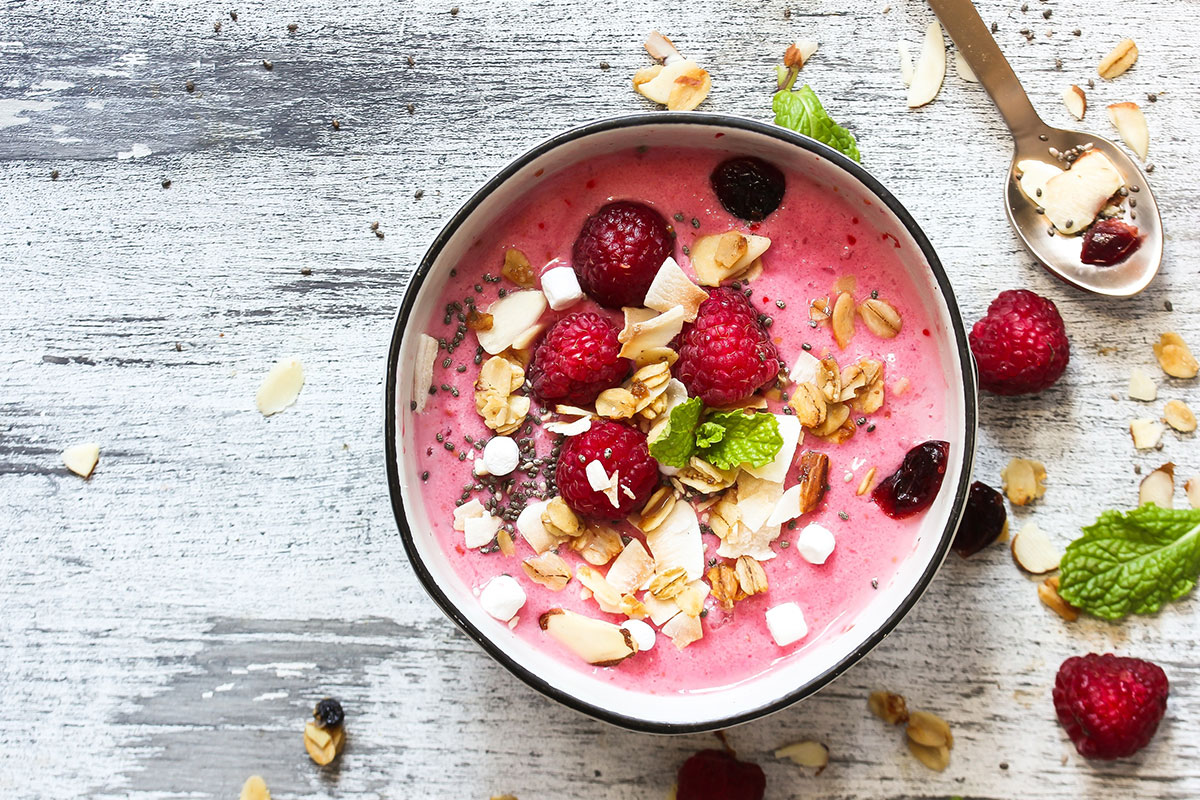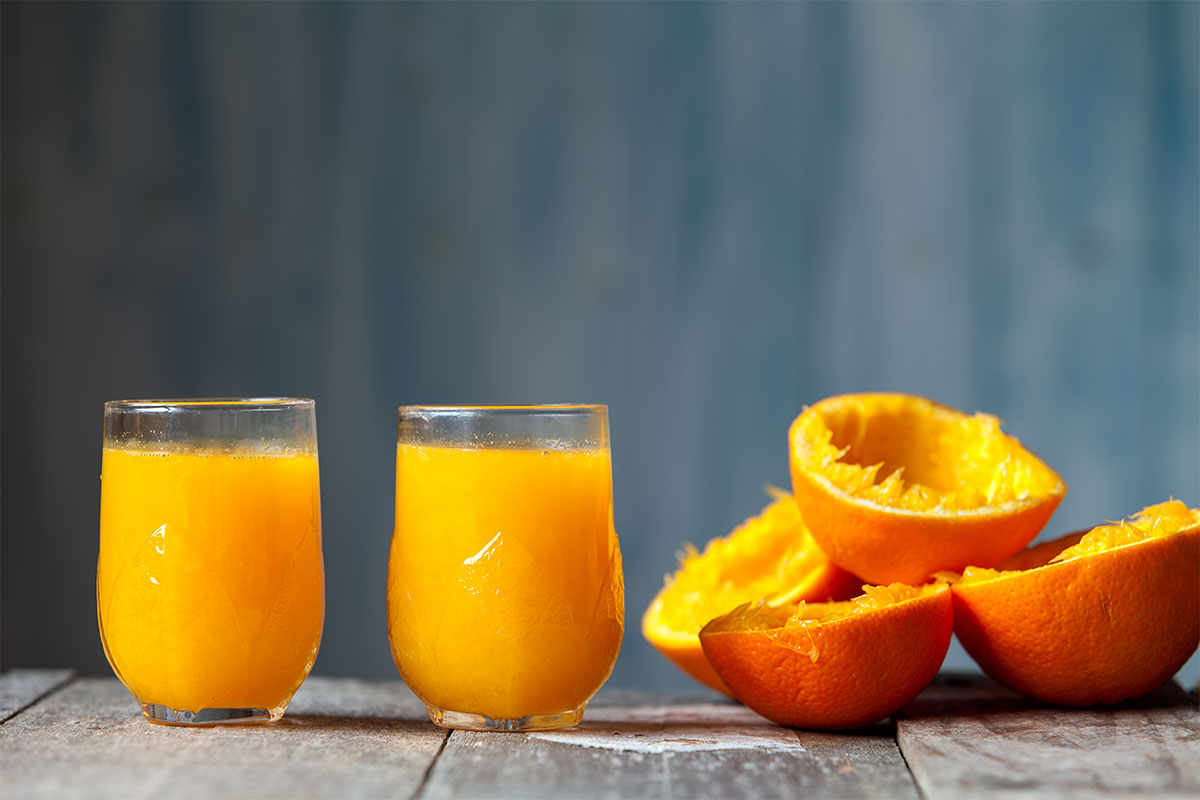Why am I Gaining Weight Despite Diet and Exercise? │ QA
If you’re careful with your nutrition, working out weekly, and still experiencing problems with your weight, take a moment to read this QA.


My name is Kenton and I am 20 years old. I little bit of background: I swam for the University of the Pacific for 2 years but decided to take some time off from school to work and train. With Pacific I was training about 20 hours a week and I weighed 143 pounds at my heaviest. I have been weight training 4-5 times a week since January but currently weigh 140 lbs. My goal is to weigh around 155 pounds. Any advice would be amazing.
– Kenton Q.

I understand your weight goal is beyond your previous heaviest mark. That may take some doing! Further nutrition will only augment the weight training you are able to put towards that goal unless you want pure fat gain. (I’ll assume not.) As it’s not clear what your previous or current diet habits are, I can only offer general advice to put on lean mass.
First – increase nutrient density. Get the most out of every bite with high calorie and nutrient-packed choices. That means that dilute, air or water-filled choices take a back seat to heavier, and rich options. For example, eat oats or granola instead of puffed rice and choose ground meat patties over most fish fillets, except higher fat salmon, herring, mackerel or sardines. Tortillas can replace bread. Snack on dried fruits instead of melon. Fill half your plate with starchy vegetables like peas, corn, carrots and winter squash instead of watery vegetables such as onion, peppers, zucchini, and celery. Even higher sugar or fatty beverages like juices and whole milk help more than water for weight gain.
Second — eat a lot, eat often. Consuming more sheer volume boosts calories and usually offsets healthier (lower calorie) choices. When volume is limited, eating quickly before you feel full or splitting a meal in half to eat an hour or two later can mean getting in more bulk. When you think you’re done eating, push yourself to finish a couple more bites. Wait until after you eat to drink your beverage (and make sure it has calories, too.)
Third – time it right. Fuel your muscles properly pre- and post-workout to capitalize on the surge of hormones driving anabolism. The nutrition window to boost protein synthesis is considered about 30 minutes before and after weight training. Easy to digest lean proteins and low-fiber carbohydrates are the prime choices. Examples are egg whites, poultry breast, bagels, and pretzels. This is also when faster digesting liquid supplements have a leg up on solid food.
– Debbie J., MS, RD
This article should not replace any exercise program or restrictions, any dietary supplements or restrictions, or any other medical recommendations from your primary care physician. Before starting any exercise program or diet, make sure it is approved by your doctor.
Some questions have been edited for length and/or clarity.
 Have a nutrition question? Our registered dietitian is ready to help!
Have a nutrition question? Our registered dietitian is ready to help!
Email nutrition@lafitness.com or submit your question below and it may be featured in an upcoming article!
If you’re careful with your nutrition, working out weekly, and still experiencing problems with your weight, take a moment to read this QA.
Blood sugar control isn’t easy. These are Debbie’s top recommendations for how to address weight control with Type II Diabetes.
Does Intermittent Fasting give you enough time to pack the day's protein? Our registered dietitian helps clear up the confusion!


I have been taking the protein powder below for 4-5 years. I was listening to something on the LA Fitness TV that said it is important to select the correct protein powder. I have a protein shake in the morning. I am about 107 lbs. I am working on lowering my cholesterol. Is there a protein powder I should be taking that will be better for me? https://www.vitacost.com/sunwarrior-warrior-blend-plant-based-organic-protein-vanilla
– Varsha P.

Compared to consuming whole animal food protein sources, vegan protein sources are better for lowering harmful blood lipids. When it comes to protein drinks, there may be less of a difference because supplements are generally very low in fat, often under 2 grams per 20 grams of protein. While dairy-based supplements may have some dietary cholesterol, either may contain insignificant saturated fat, which is the primary component that’s known to elevate cholesterol levels. Protein powders are a poor source of fiber, omega-3 fatty acids and plant sterols which are food compounds known to help reduce cholesterol levels.
If you’re limited to the vegan protein powder category, you may not want to stick with one specific supplement for life. As each source offers a different mix of essential amino acids, it’s best to cycle your proteins to get the full range of building blocks your cells require. Of course, you can do that with the whole food protein sources in your diet by getting a variety of legumes, beans, nuts, seeds and vegetables. Doing so will enable you to consume adequate fiber, omega-3 fatty acids and plan sterols needed for blood cholesterol reduction.
– Debbie J., MS, RD
This article should not replace any exercise program or restrictions, any dietary supplements or restrictions, or any other medical recommendations from your primary care physician. Before starting any exercise program or diet, make sure it is approved by your doctor.
Some questions have been edited for length and/or clarity.
 Have a nutrition question? Our registered dietitian is ready to help!
Have a nutrition question? Our registered dietitian is ready to help!
Email nutrition@lafitness.com or submit your question below and it may be featured in an upcoming article!
If you’re careful with your nutrition, working out weekly, and still experiencing problems with your weight, take a moment to read this QA.
Blood sugar control isn’t easy. These are Debbie’s top recommendations for how to address weight control with Type II Diabetes.
Does Intermittent Fasting give you enough time to pack the day's protein? Our registered dietitian helps clear up the confusion!


What is a better breakfast for weight loss: yogurt or egg, potato, and cheese? What is better for lunch: sandwich (with cheese and mayo), lean cuisine, or low-calorie soup?
– Larry S.

Between your breakfast options of yogurt or egg, potato and cheese there are really more than two choices, as each can be prepared different ways and in varying volume. The yogurt by itself is probably less calories if you’re talking about a standard 6-ounce cup. Some non-fat yogurts are only 80 calories and contain food starch and gelatin. Not what I would call a decent breakfast that would stave off hunger before lunch!
If the yogurt is from whole milk and highly sweetened, then 8 ounces might provide 280 calories, 11 grams fat, 34 grams carbohydrate (31 grams sugar) and 11 grams protein1. For a similar 290 calories it would take two egg whites, a half-cup lightly fried potato and an ounce of low-fat cheese which provide 14 grams of fat, 24 grams carbohydrate (2 grams fiber) and 17 grams protein2.
For weight loss, I’d suggest getting more protein and fiber to fuel your morning and satisfy until lunchtime with these options:
1 cup high-protein, low-fat plain yogurt (Greek style) with ½ cup strawberries, Tbsp coconut, Tbsp granola and tsp flax seed [265 calories, 8 gm fat, 24 gm carb, 26 gm prot] 2
or
three egg whites, ½ ounce of low-fat cheese and a half-cup lightly fried potato/onion/pepper blend [273 calories, 8 gm fat, 31 gm carb, 19 gm prot] 2
In either case, the extra little ingredients and preparation make a more complete balanced breakfast.
Your lunch options of a sandwich with cheese and mayo, a Lean Cuisine or low-calorie soup are even more difficult to compare because there are so many possibilities! The latter two are usually under 300 calories, so I’ll use that target for evaluation. Really, you can find something that works in each category.
Here’s how a single pick from each option stack up:
| Calories | Fat grams | Carbohydrate grams (fiber, sugar) | Protein grams | |
| A sandwich with 2 slices wheat bread, 2 ounces turkey breast, an ounce of low-fat Colby Jack cheese and a Tbsp low-fat mayonnaise3 | 291 | 7 | 33 (2, 6) | 22 |
| Lean Cuisine
Chicken with Peanut Sauce4 |
290 | 7 | 35 (3, 11) | 21 |
| Full can of lower calorie Italian wedding soup5 | 270 | 6 | 38 (4, 13) | 15 |
The picks above are fairly comparable overall, though carbohydrate breakdown varies. The sandwich can be made as you like it (so the nutrition may vary), whereas the packaged foods are set. I like that the soup has the most fiber, but unfortunately, it has the most sugar and the least protein. Swapping whole-grain bread for standard wheat or adding lettuce and tomato may up the fiber in the sandwich a tad. In any case, a sub-300 calorie lunch entree is likely to only suit daily intakes of 1200-1500 calories. As far as weight loss goes, I’d opt for one with more protein and fiber that you are most satisfied with and get the best energy from.
Sources:
– Debbie J., MS, RD
This article should not replace any exercise program or restrictions, any dietary supplements or restrictions, or any other medical recommendations from your primary care physician. Before starting any exercise program or diet, make sure it is approved by your doctor.
Some questions have been edited for length and/or clarity.
 Have a nutrition question? Our registered dietitian is ready to help!
Have a nutrition question? Our registered dietitian is ready to help!
Email nutrition@lafitness.com or submit your question below and it may be featured in an upcoming article!
If you’re careful with your nutrition, working out weekly, and still experiencing problems with your weight, take a moment to read this QA.
Blood sugar control isn’t easy. These are Debbie’s top recommendations for how to address weight control with Type II Diabetes.
Does Intermittent Fasting give you enough time to pack the day's protein? Our registered dietitian helps clear up the confusion!


I live in Florida and need a dietician due to cholesterol, triglycerides and other issues. Can you recommend a good dietician or books?
– Myles V.

There are several directories for Registered Dietitians in the state of Florida such as www.DietitianCetnral.com and https://www.eatright.org/find-an-expert. You can narrow your search to a specialty such as “cholesterol management” or “heart health,” or to your city. Even if medical nutrition therapy is not a covered service under your health plan, you may find a list of providers from your insurer.
You can verify a dietitian’s license with the Dietetics and Nutrition Practice Council of Florida through https://appsmqa.doh.state.fl.us/MQASearchServices/HealthCareProviders.
– Debbie J., MS, RD
This article should not replace any exercise program or restrictions, any dietary supplements or restrictions, or any other medical recommendations from your primary care physician. Before starting any exercise program or diet, make sure it is approved by your doctor.
Some questions have been edited for length and/or clarity.
 Have a nutrition question? Our registered dietitian is ready to help!
Have a nutrition question? Our registered dietitian is ready to help!
Email nutrition@lafitness.com or submit your question below and it may be featured in an upcoming article!
If you’re careful with your nutrition, working out weekly, and still experiencing problems with your weight, take a moment to read this QA.
Blood sugar control isn’t easy. These are Debbie’s top recommendations for how to address weight control with Type II Diabetes.
Does Intermittent Fasting give you enough time to pack the day's protein? Our registered dietitian helps clear up the confusion!


How healthy are fruit juices like orange juice with no pulp? Do fruits/vegetables from concentrate in smoothies typically only have the water removed with most of the fiber intact? Does it matter if the juice is from concentrate in terms of limiting sugar intake per day?
– Nick S.

We often think the pulp retains the fiber, while the expressed juice does not. Taking a look at the labels from three major bottled OJ brands, the nutritional information was nearly identical:
1 cup pulp-free had 110 calories, 22-23 grams sugar, 0 gram fiber
1 cup high pulp had 110 calories, 22-23 grams sugar, 0 gram fiber
But where’s the fiber? When fiber is less than 1 gram and no fiber claims are made, the Nutrition Facts panel may not even have Dietary Fiber listed. The type of fiber, called pectin, is a beneficial soluble fiber that helps lower blood cholesterol and slows the passage of food through the gut.
Citrus pulp is also promoted as containing nutrients such as vitamin C, beta-carotene and several minerals. But the evidence of such nutrition is a mystery to me. Not one online article about fruit pulp that I found had an original source citing micronutrient content. The USDA’s Food Composition Database’s ONLY standard reference pulp is that of Naranjilla (lulo), a South American fruit. Hardly something found in American grocery shelves. I found the Nutrition facts panel for a passion fruit pulp sold in the US and it has 1 gram fiber, 9 grams sugar, 2% DV calcium, and 2% DV iron per half-cup serving.
So… although I’ve always been taught (at home and professionally) that the pulp is nutritious, there appears to be a lack of resources to substantiate anything other than a small amount of fiber content. But I still promote consuming fruit skins, pulp, and pith. Here’s why – humans’ teeth and GI tracts were meant to consume as much of a plant as is edible, and to receive the full benefit of a fruit’s nutrients and phytochemicals we need to eat all of its components. Eating raw, whole foods is always better than a processed version.
Sources:
Fruit concentrate is basically fruit puree with the water removed, and usually the skin and membranes as well. Already the overall nutrition will differ from that of the raw fruit. Concentrates that are pasteurized will be lower in heat-sensitive vitamin C unless the product is fortified. On food labels, the sugar from concentrate is considered “added sugar.”
Fruit juice concentrate is made when water is extracted from the juice. This is beneficial for both preserving the juice and reducing shipping weight. Concentrates are higher in sugar and energy by weight and volume. If the concentrate is reconstituted, water is added back to form the liquid state and the result should be no different than the original juice. Reconstituted juice’s sugar and energy content would be restored to their initial levels.
Sources:
What Is ‘Fruit Concentrate,’ Anyway? And Is It Good For You? NPR 9.1.2017. https://www.npr.org/sections/thesalt/2017/09/01/545336956/what-is-fruit-concentrate-anyway-and-is-it-good-for-you
– Debbie J., MS, RD
This article should not replace any exercise program or restrictions, any dietary supplements or restrictions, or any other medical recommendations from your primary care physician. Before starting any exercise program or diet, make sure it is approved by your doctor.
Some questions have been edited for length and/or clarity.
 Have a nutrition question? Our registered dietitian is ready to help!
Have a nutrition question? Our registered dietitian is ready to help!
Email nutrition@lafitness.com or submit your question below and it may be featured in an upcoming article!
If you’re careful with your nutrition, working out weekly, and still experiencing problems with your weight, take a moment to read this QA.
Blood sugar control isn’t easy. These are Debbie’s top recommendations for how to address weight control with Type II Diabetes.
Does Intermittent Fasting give you enough time to pack the day's protein? Our registered dietitian helps clear up the confusion!
Be the first to know about exclusive
content, deals and promotions